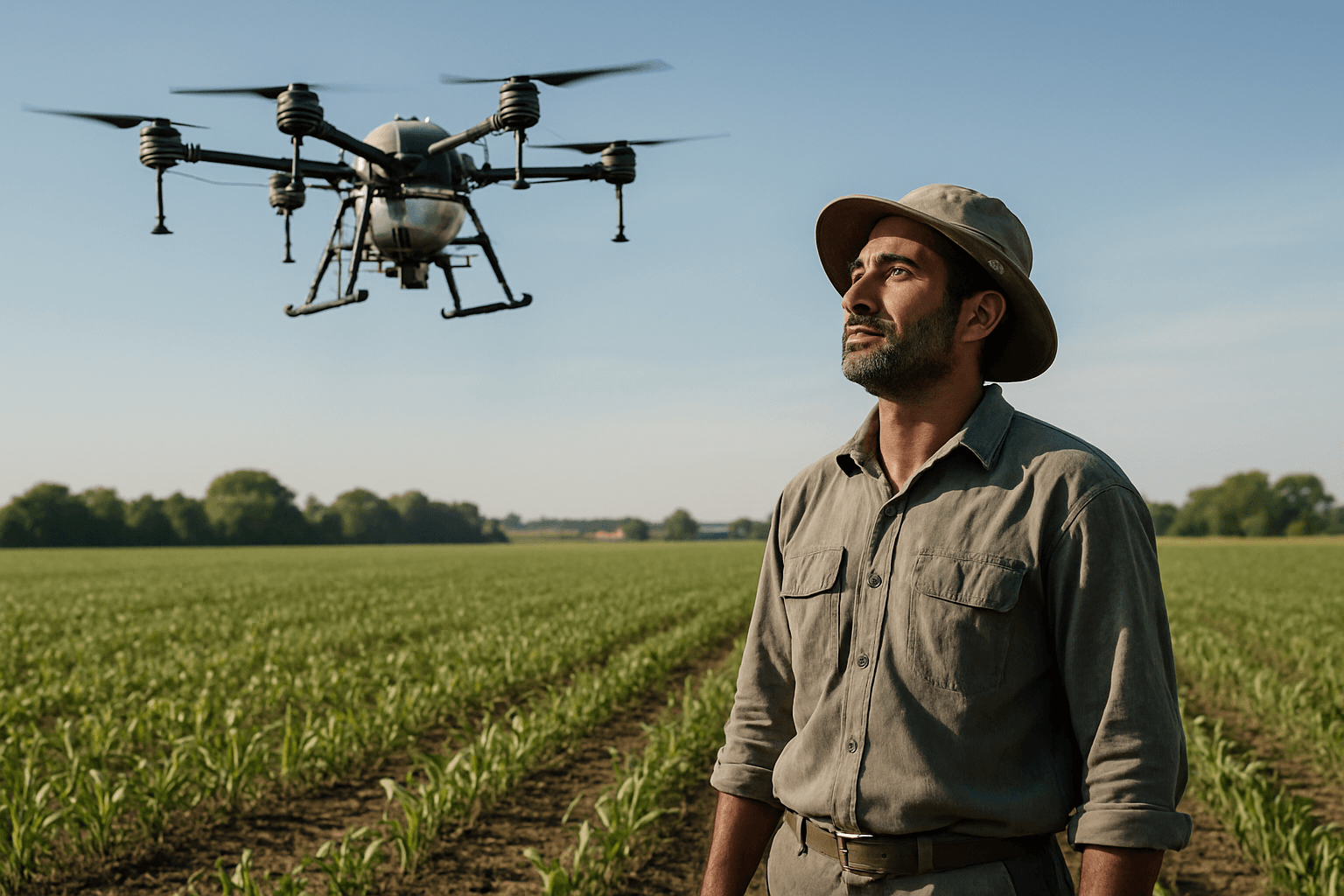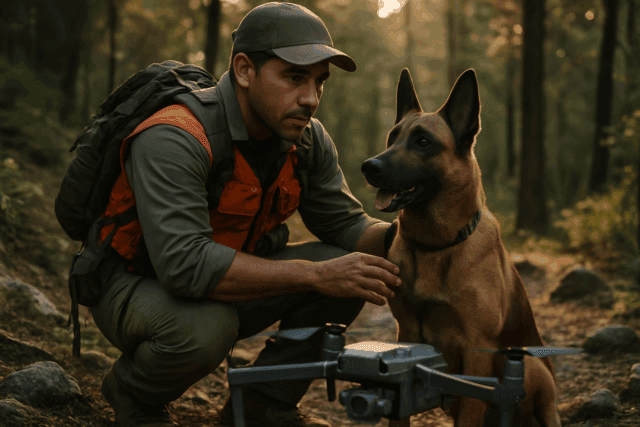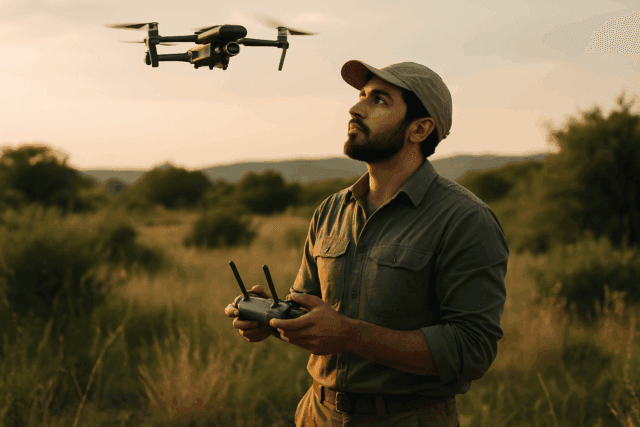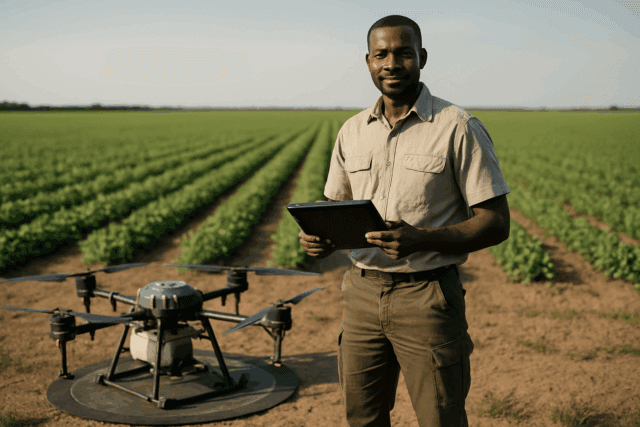Agriculture is undergoing a significant transformation, with technology playing a pivotal role in optimizing crop management and maximizing yields. Among the most impactful innovations are agricultural drones, which have emerged as indispensable tools for precision spraying and seeding. These unmanned aerial vehicles (UAVs) offer unparalleled efficiency, accuracy, and sustainability, fundamentally changing how farmers approach their daily operations.
From targeted pesticide application to efficient seed distribution, the right agricultural drone can dramatically reduce costs, minimize environmental impact, and improve overall crop health. But with a rapidly evolving market, selecting the best drone for your specific needs requires understanding the key features and leading models available today.
Why Agricultural Drones are a Game Changer for Farmers
The adoption of drones in agriculture is driven by a host of compelling benefits that address many traditional farming challenges:
Enhanced Precision and Efficiency
Agricultural drones deliver unprecedented levels of precision and efficiency. Equipped with GPS and advanced navigation systems, they ensure consistent spray patterns and accurate chemical or seed placement, significantly reducing waste and improving application effectiveness. This level of accuracy can lead to superior crop yields. Drones can cover large areas much quicker than manual methods, with some models capable of spraying dozens of acres per hour.
Reduced Labor and Operational Costs
By automating spraying and seeding tasks, drones drastically cut down on labor requirements and the need for heavy machinery. This not only lowers operational costs but also allows farmers to reallocate their workforce to other critical tasks.
Minimizing Environmental Impact and Soil Compaction
Traditional farming often involves heavy machinery that can compact soil, reducing its ability to absorb water and nutrients, which negatively impacts crop yield. Drones operate from above, eliminating soil compaction and preserving soil health. Furthermore, their targeted application capabilities reduce chemical runoff and overall pesticide/fertilizer use, promoting more sustainable farming practices and minimizing environmental pollution.
Accessibility to Difficult Terrain
Drones can easily access terrains that are challenging or impossible for traditional machinery, such as steep hillsides, flood-prone areas, or fields with delicate, sensitive soil. This ensures uniform treatment across the entire farm.
Key Features to Consider When Choosing an Agricultural Drone
Selecting the ideal agricultural drone requires careful evaluation of several critical factors tailored to your farm’s specific needs.
Payload Capacity and Tank Volume
The drone’s ability to carry liquid (for spraying) or granular material (for seeding/spreading) is paramount. Larger farms typically require drones with higher payload capacities to cover more ground in a single flight, reducing refill stops and increasing efficiency. Capacities can range from 8 liters to over 90 liters for spraying, and up to 150 kg for spreading.
Flight Time and Coverage Area
Longer flight times translate to greater coverage per charge, which is crucial for large-scale operations. Consider the drone’s typical flight duration with a full payload and its operational efficiency (hectares or acres per hour). Some high-end drones can cover over 20 hectares (approximately 50 acres) per hour.
Precision and Navigation Systems
Accuracy is key in precision agriculture. Look for drones equipped with:
- RTK/PPK GPS: Real-Time Kinematic (RTK) or Post-Processed Kinematic (PPK) systems provide centimeter-level positioning accuracy for precise flight paths and application.
- Obstacle Avoidance: Advanced radar and binocular vision systems allow drones to detect and bypass obstacles in real-time, ensuring safe operation, especially in complex environments like orchards.
- Terrain Following: This feature enables the drone to maintain a consistent altitude above uneven terrain, ensuring uniform application regardless of ground variations.
Spraying and Spreading System Technology
The effectiveness of application depends heavily on the drone’s dispensing mechanisms:
- Nozzle Types and Atomization: Different nozzles and atomization technologies (e.g., centrifugal atomization, dual atomizing spraying systems) can produce a range of droplet sizes (e.g., 60-400 μm), allowing for optimal penetration and coverage for various chemicals and crops.
- Flow Rate and Spread Width: High flow rates (liters/minute) and wide spread widths (meters) contribute to faster and more efficient coverage.
- Variable Rate Application (VRA): This technology allows the drone to adjust the application rate based on real-time data or pre-programmed maps, optimizing resource use.
Durability and Portability
Agricultural drones operate in demanding outdoor conditions. Features like IP67 water and dust resistance, robust frames (e.g., carbon fiber), and foldable designs enhance durability and ease of transport between fields.
Intelligence and Automation
Modern agricultural drones leverage AI for intelligent route planning, automatic obstacle bypassing, and autonomous flight modes. FPV (First Person View) cameras provide real-time monitoring, while smart controllers and companion apps simplify operation.
Multi-functionality
Some drones can perform multiple tasks beyond spraying and seeding, such as aerial surveying, mapping (with multispectral sensors), and even cargo transport. This versatility adds significant value.
Leading Agricultural Spraying and Seeding Drones
Several manufacturers lead the market with advanced drones designed for agricultural applications.
DJI Agras Series
DJI’s Agras series is a dominant force in agricultural drones, known for its robust performance, advanced features, and comprehensive solutions.
- DJI Agras T50: The Agras T50 is one of DJI’s most advanced agricultural drones, integrating aerial surveying, spraying, and spreading. It boasts a coaxial twin-rotor design, supporting up to 40 kg for spraying and 50 kg for spreading (75 L tank capacity for spreading). Key features include a Dual Atomizing Spraying System, front and rear Active Phased Array Radars, and Binocular Vision for precise terrain mapping and obstacle detection. It can achieve impressive flow rates up to 24 L/min for spraying and 108 kg/min for spreading. The T50 is ideal for large-scale operations and complex tasks, offering an operational efficiency of up to 21 hectares per hour.
- DJI Agras T40: A proven workhorse, the T40 features a dual-rotor coaxial design, a 40-liter spray tank, and a 50 kg (70 L) spreading capacity. It incorporates Active Phased Array Radar and AI-powered spray planning, ensuring uniform distribution and intelligent terrain following. The T40 is suitable for large fields, capable of covering up to 40 acres per hour.
- DJI Agras T25: This compact and foldable drone is designed for mid-sized farms and orchards. It offers 20 kg spraying and 25 kg spreading capabilities. The T25 includes a Dual Atomizing Spraying System and advanced radar/vision systems for safety and precision, with orchard-optimized flight modes. Its lightweight and foldable design makes it highly portable for solo operations.
- DJI Agras T10: A more budget-friendly and compact option, the T10 is well-suited for smaller farms or those new to drone technology. It has an 8-liter spray tank (10 kg spraying payload) and can cover up to 6 hectares (15 acres) per hour.
XAG Agricultural Drones
XAG is another major player, offering innovative drones with a strong emphasis on automation and multi-functionality.
- XAG P150: Engineered for power and efficiency, the XAG P150 features an advanced coaxial twin-rotor design with a maximum takeoff weight of 95 kg and a 50 kg payload capacity. It can carry a 40 L spraying tank and a 75 L seeding spreader. The P150 integrates a smart dual-pump spray system (up to 24 L/min) and a high-volume broadcast spreader, making it versatile for spraying, seeding (rice, wheat, grass), and fertilization. It boasts an operational efficiency of up to 20 hectares per hour and features advanced obstacle avoidance and real-time 3D terrain mapping.
- XAG P100 Pro: This autonomous drone features AI-driven route planning and dual-atomization nozzles for ultra-fine spraying. It has a 40 kg payload and smart obstacle avoidance, making it a top-tier option for professional farmers. It also features fast battery recharge capabilities.
TTA Agricultural Drones
TTA offers economical and efficient solutions, particularly for small to medium-sized farms.
- TTA G200 / M6E: These models are designed as integrated solutions for agricultural spraying services. The TTA G200 has a 16L tank and can cover 2.7-4 acres in 10 minutes with a full payload. They emphasize features like waterproof design, long flight times, low maintenance, and precise flow rate control. TTA drones use RTK accurate positioning, flight log playback, and multiple operation modes including automatic spraying and obstacle avoidance. They are noted for saving significant amounts of water and pesticides compared to traditional methods.
Other Notable Drones
While DJI and XAG dominate, other specialized drones are also gaining traction:
- Hylio AG-122 / AG-272: These are heavy-duty, high-capacity spraying drones designed for commercial-scale agriculture, offering large spray tanks and precision GPS-based navigation.
- ABZ Innovation L30: A budget-friendly option with a 30L tank, capable of covering 52 acres/hour, and smart flight planning.
- ZenaDrone 1000: Specifically highlighted for drone seeding, it offers automatic GPS tracking with adjustable seed distribution settings, suitable for farming and environmental planting projects.
Regulatory Landscape for Agricultural Drones in the US
Operating agricultural drones, especially those used for spraying, is subject to strict regulations by the Federal Aviation Administration (FAA) in the United States.
- FAA Part 107 Remote Pilot Certificate: All commercial drone operators must obtain this license by passing an aeronautical knowledge test.
- FAA Part 137 Agricultural Aircraft Operator Certificate: To dispense chemicals and agricultural products from a drone, operators need this certification, which is the same one used by crop dusters. This involves an application detailing operations, types of substances, and safety protocols.
- Drone Registration and N-Number: All drones weighing 0.55 pounds or more must be registered with the FAA and display a unique N-number.
- Section 44807 Exemption: For drones weighing over 55 pounds, operators typically need to petition for an exemption from certain Part 137 regulations.
- State and Local Applicator Licenses: In addition to federal requirements, operators must obtain a commercial pesticide applicator license from their respective state’s regulatory agency to spray chemicals aerially.
The Future of Precision Agriculture with Drones
The agricultural drone market is rapidly advancing, with continuous improvements in battery life, AI-powered flight planning, and increased payload capacities. The integration of advanced sensors like LiDAR and multispectral cameras is enhancing drones’ ability to collect granular data on crop health, soil moisture, and field conditions, leading to more informed and efficient farming decisions. As these technologies become more accessible and sophisticated, agricultural drones will play an even more crucial role in fostering sustainable practices, boosting productivity, and ensuring food security worldwide.





